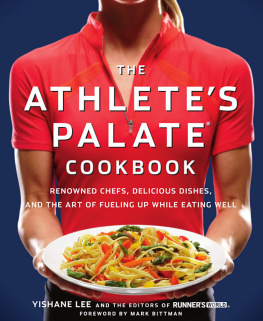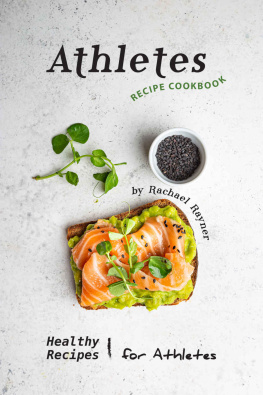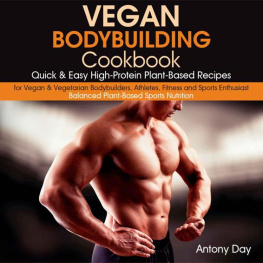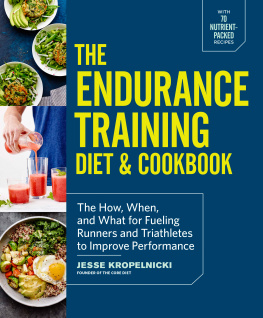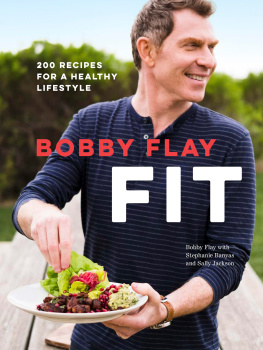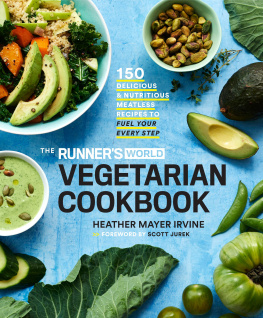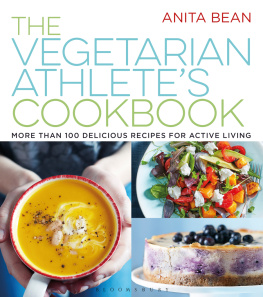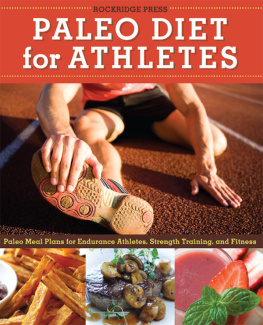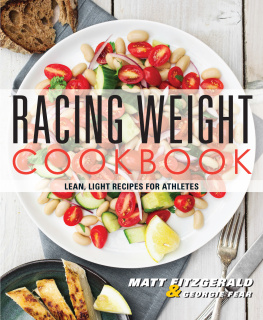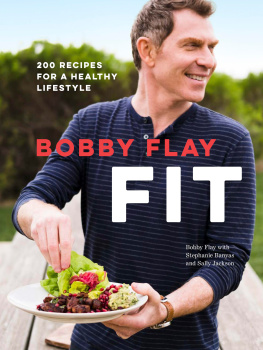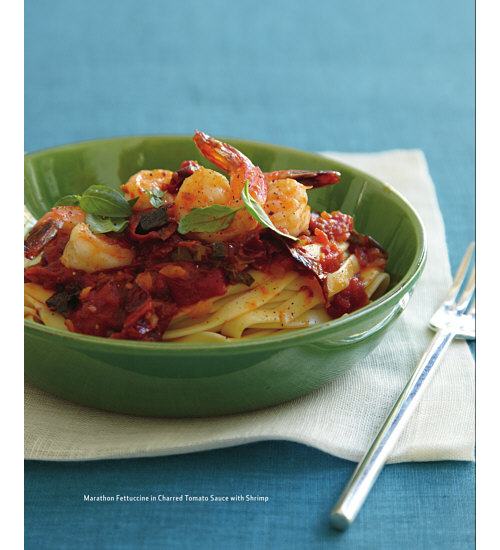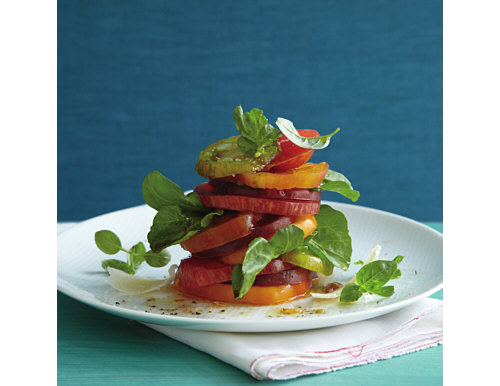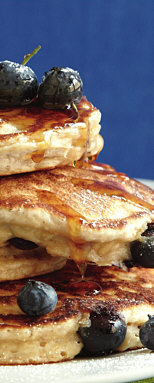For every athlete who wants to eat well.
I began cooking before I began running, so by the time I started pounding the pavement in 1976, there was always decent food in my house. But within a few years, my running and my cooking became much more serious. I started writing about food professionally in 1980. (I havent yet managed to figure out how to run professionally.)
For me, running was part of a health kick. I decided to stop smoking in anticipation of the birth of my first daughter and thought running might help me quit. (It did.) Within a couple of years, 6- and 8-mile runs became routine and 10- and 12-mile runs werent awe-inspiring.
Ten years later, I ran my first of five marathons. I finished the 1986 Stamford Classic Marathon in Connecticut in a satisfying 4:20. Of course, the post-long-run roaring hunger made me eat moreand, in my case, cook more. To me, running and cooking are both uncomplicated pleasures, enjoyed with minimum equipment and time.
Unintentionally, my career was built on this premise, and Ive become known as someone who cooks non-cheferly, straightforward food. Ive always said that all you need is a few ingredients and a little time to produce great meals. For runners, this has special appeal, since were often tired, usually busy, and always hungry.
Thats where this cookbook can help. The chefs who have contributed to The Athletes Palate column since its 2004 debut in Runners World magazine are a diverse lot. Some have restaurants around the world or even appear on their own television shows, while others oversee neighborhood bakeries with devoted customers they know by name. They all have these important things in common: They love to cook, they love to exercise, and they love to eat.
The recipes theyve contributed answer the question of what to eat before, after, and even during exercise. Whether a dish is simple and suited for a quick weeknight dinner or is a calorie splurge and company-worthy, the recipes give athletes a wealth of tasty options for every meal of the day, as well as for snacking and dessert.
Each contains nutritional benefits, but the point of the book is as much fueling for a race as it is enjoying the fuel itself. What follows are 100-plus delicious reasons to put on your running shoes, your swimsuit, your bike pedal clips, or your hiking boots and to simply enjoy eating, and eating well.
Mark Bittman is a contributing chef to Runners World magazines Athletes Palate column. He is one of the countrys best-known and widely admired food personalities and the author of a dozen books, including How to Cook Everything and Food Matters. He is also the creator of the popular cooking column in the New York Times, The Minimalist, which debuted in September 1997.
Mark Bittman
Food is fuel, and no one is more keenly aware of this than athletes. Ask runners why they run, bicyclists why they bike, and triathletes why they do everything, and more often than not youll get the answer to eat, and to eat well. This cookbook celebrates eating well in every sense of the wordfood that is good to eat and good for you.
When the editors of Runners World magazine came up with the idea of The Athletes Palate column, which debuted in 2004, the objective was to profile chefs who were also runners and to learn what their favorite dishes were for fueling and recovery. Running and cooking are both obsession-worthy activities, and it was never a challenge to find chefs who are as passionate about running as they are about cooking, whose four stars may be dwarfed only by their fastest time.
True, often chefs have notoriously poor habits when it comes to eating and exercise. They must taste dishes all day, and long hours in the kitchen translates into not a lot of time to work out. Thats precisely why running in particular is so popular an activity for chefs. To run you dont need special equipment or a partner to play with, and you can do it virtually anywhere and anytime and as intensely or as easily as you like. For chefs who juggle meal preparation and late nights and who may have a spare hour only in the afternoon between lunch and dinner seatings or when the kitchen closes at midnight, running is the perfect sport.
Running is also one of the most efficient ways to burn calories. You burn four times as many net caloriesthat is, the total calories burned minus the calories youd expend at restper hour than walking. And exercise of any sort gives you more energy, lifts the mood, and relieves stress.
Chefs who run are absolutely aware of the symbiotic relationship between eating well and keeping fit, between what you eat and how you feel. Healthy food doesnt necessarily mean a diet of denial. Instead, it can include menus rich in taste and flavor as well as nutrients. Low fat doesnt equal low taste, nor does high carb mean plain pasta.
When youre making the effort to keep fit, youll find that your body naturally craves what it needs not heavy, greasy foods but, rather, high-quality carbs, proteins, and (yes) fats. What these chefs have found and what youll find, too, is that eating and exercise are intrinsically tied togetherwhen one improves, so does the other.
Weve taken some of the guesswork out of what foods and nutrients to look for while training and when recovering from a workout. Recipes marked training are good dishes to consider while training for a big race. While there is often a mix of both, they favor carbohydrates over protein. Those marked recovery are good for helping your muscles recover and to replenish nutrients expended through exercise, such as potassium. And for athletes whose idea of cooking might be opening a can of spaghetti sauce, we have used the label quick and easy to designate dishes that are simple and quick to make.
Yishane Lee
Not only is breakfast critical for refueling after a workout, it is also important for maintaining a healthy weight. Countless studies have shown that people who enjoy breakfast are better at managing their weight or even losing weight. Having a morning meal prevents you from becoming too hungry and prone to overeating later. And no wonder: Barring the midnight munchies, by the time the sun comes up your body has basically been fasting for up to 12 hours. Eating something in the morning will restore blood sugar levelsand put you in a better mood to face your workout and the day.
If you are moderately exercising early in the morning for an hour or less, a snack of 100 to 300 calories will be enough to power you through. This can be as simple as a glass of juice or a sports drink, gel, or bar. You can make your own using a recipe from Oregon chef Vitaly Paley, WHOse Energy Bar fuels with dried fruits and nuts.

